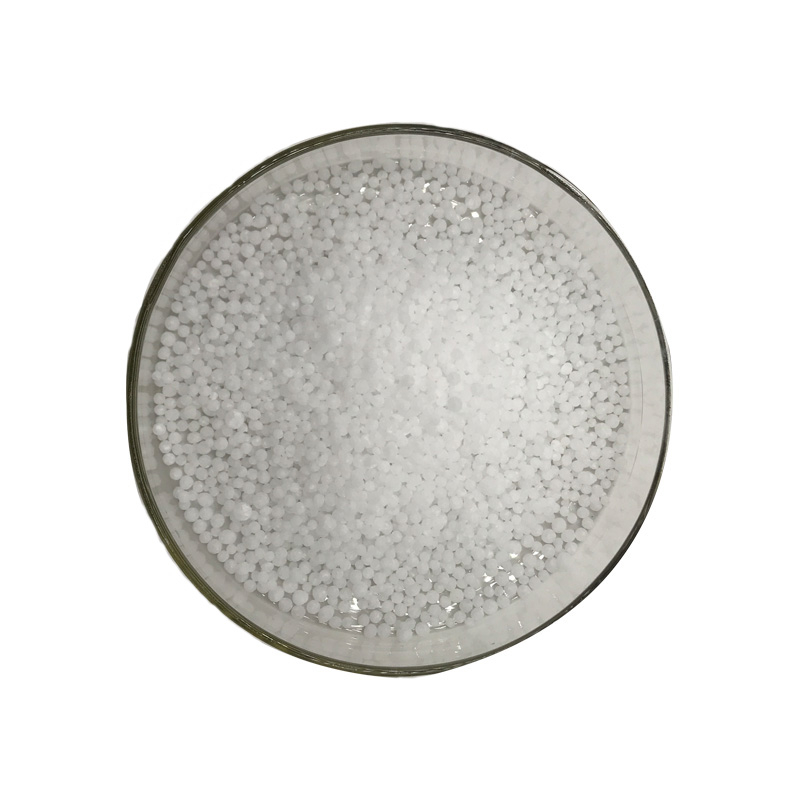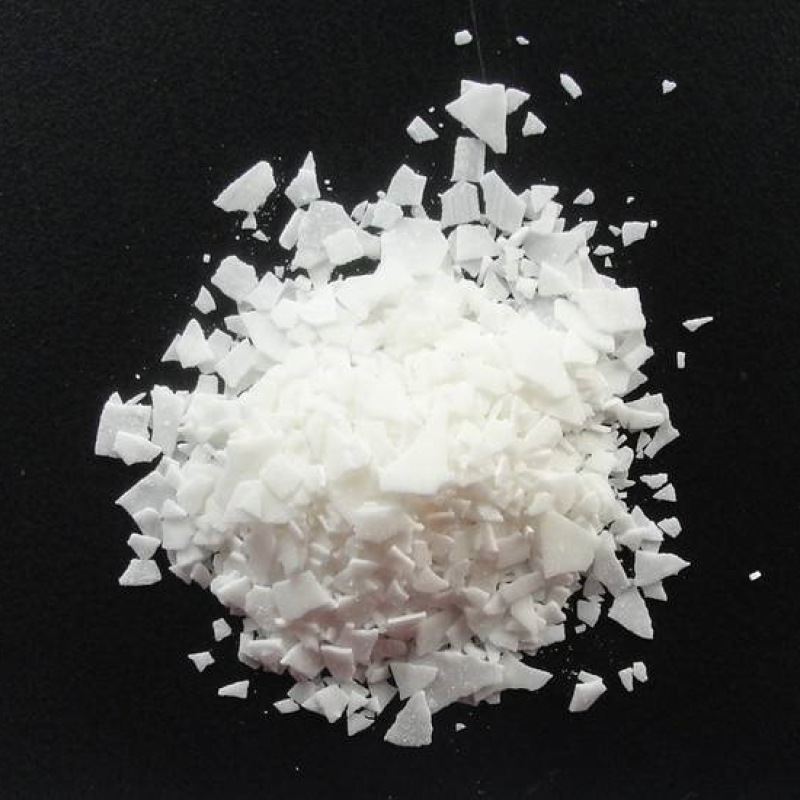Products Description of Antioxidant 168 CAS#31570-04-4Antioxidant 168 is a phosphite antioxidant with excellent performance. It has strong extraction resistance, is stable against hydrolysis, and can significantly improve the light stability of products. It can be used in combination with a variety of phenolic antioxidants. . For example, Cyanox2777 developed by the American company Cyanamid is a compound of antioxidant 168 and phenolic antioxidant 1790. The combined use of phosphite and phenolic antioxidants can give full play to the synergistic effect.
Contact Now
Products Description of Antioxidant 168 CAS#31570-04-4Antioxidants are organic compounds that can inhibit or delay the thermal oxidation of polymers and other organic compounds in the air. Usually, adding a small concentration of 1% antioxidant is very effective. For example, foods are prone to oxidation and deterioration, and a small amount of antioxidants can be added to extend their storage time. Polymer materials such as plastics, synthetic fibers and rubber are prone to thermal oxidation degradation reactions.
Contact Now
Antioxidant 1035 Chemical PropertiesMelting point 78 °CBoiling point 659.4±55.0 °C(Predicted)density 1.072±0.06 g/cm3(Predicted)storage temp. Sealed in dry,Room Temperaturesolubility DMSO (Slightly), Methanol (Slightly)form Solidpka12.02±0.40(Predicted)color White to Off-WhiteCAS DataBase Reference41484-35-9(CAS DataBase Reference)EPA Substance Registry SystemThiodi-2,1-ethanediyl bis[3,5-di-tert-butyl-4-hydroxyhydrocinnamate] (41484-35-9)Safety InformationRTECS DA8342500HS Code 2930.90.2900Factory and Equipment ShowFast delivery timeInventory 2-3 w
Contact Now
Products Description of Antioxidant 1010 CAS#6683-19-8Antioxidant 1010 is a macromolecular multifunctional hindered phenol antioxidant, soluble in benzene, acetone, chloroform, insoluble in water. It is non-polluting, non-coloring, low in volatility, and has good extraction resistance.It is widely used in polyethylene, polypropylene, polyoxymethylene, ABS resin, PS resin, PVC, engineering plastics, rubber and petroleum products, and has excellent antioxidant properties for polypropylene and polyethylene. It can effectively extend the service life of the product.1.
Contact Now
Products Description of Antioxidant CAS#27676-62-6 Antioxidant 3114 is a hindered phenol antioxidant with three functional groups. It is non-polluting and non-coloring. Due to its high molecular weight and melting point, it has extremely low volatility, low migration, good water extraction resistance, and can give plastics excellent resistance to thermal oxidation and light oxidation. This product can be used for polyolefin products that come into contact with food (can come into contact with fatty and non-fatty foods).
Contact Now
Products Description of Antioxidant 1330 CAS#1709-70-2Hindered phenol antioxidant 330 is a white crystal powder with a melting point above 244°C and is insoluble in water. The solubility (g/100g solvent) in certain solutions at 18°C is: benzene 20, methylene chloride 31.9, methylcyclohexane Alkane 1.7, methanol 0.2, isopropyl alcohol 0.1.
Contact Now
Butylated Hydroxytoluene CAS#128-37-0Butylated hydroxytoluene is a synthetic phenolic compound mainly used as an antioxidant and preservative in the food industry.
Contact Now
Butylated Hydroxytoluene CAS#128-37-0Butylated hydroxytoluene is a synthetic phenolic compound mainly used as an antioxidant and preservative in the food industry.
Contact Now
Products Description of Antioxidant 1330 CAS#1709-70-2Hindered phenol antioxidant 330 is a white crystalline powder with a melting point above 244°C. It is insoluble in water. Its solubility in some solutions at 18°C (g/100g solvent) is: benzene 20, dichloromethane 31.9, methylcyclohexane 1.7, methanol 0.2, isopropanol 0.1.
Contact Now
Products Description of Shikonin CAS#517-89-5Shikonin (shikonin, shikonin, shikonin) is a class of natural products with naphthoquinone structure extracted from the root of Lithospermum officinale, which has anti-inflammatory, antioxidant, anti-tumor, and wound healing effects. In recent years, the anti-tumor effects of shikonin and its derivatives have been widely studied.Several in vitro and in vivo studies have shown that shikonin and its derivatives can effectively inhibit the occurrence and development of gynecological malignancies such as breast cancer and cervical cancer.
Contact Now
Products Description of Decanoyl octanoyl-glycerides CAS#65381-09-1Glyceryl caprylate, also known as GTCC, is a mixed triester of glycerol and medium-carbon fatty acids in vegetable oils. It is a colorless, odorless, low-viscosity lipophilic emollient with extremely high antioxidant properties. In cosmetics, GTCC can replace a variety of oils and fats as an emollient and fat-enriching agent, and can also be added as a carrier and diluent to active preparations or conditioners such as sterols.
Contact Now
Products Description of 2,4,6-Tri-tert-butylphenol CAS#732-26-3Organic synthesis. Aviation gas oil antioxidant. Anti-aging agent for natural rubber and synthetic rubber. Low-efficiency stabilizer for synthetic rubber.
Contact Now
Products Description of Sesamol CAS#533-31-3Sesamol, also known as 3,4-methylenedioxyphenol, is a fat-soluble lignan compound. It is an important component of sesame oil and an important quality stabilizer for sesame oil. Sesamol is present in sesame seeds, sesame oil and sesame meal, and can be continuously decomposed by sesamelin during thermal processing. The highest concentration in sesame oil can reach 64.4 mg/(100 g).Sesamol has a very strong antioxidant capacity and has been proven to have anti-inflammatory and intestinal function regulating effects.
Contact Now
Products Description of 2,4-di-tert-butylphenol CAS#96-76-42,4-Di-tert-butylphenol widely exists in plants and is also an important intermediate for fine chemical products. It is mainly used to prepare co-antioxidant 168, and is also used to prepare polyisobutylene, polyamide, polycarbonate, etc.; it is still It can be used to produce antioxidant Chemicalbook (300, 314), ultraviolet absorber, light stabilizer 120, dyes and textile auxiliaries, and 2402 resin.
Contact Now
Products Description of Glutathione CAS#70-18-8Glutathione is a tripeptide compound formed by glutamic acid, cysteine and glycine through peptide bond condensation. It is the most important low-molecular thiol for anti-oxidative stress in mammalian cells. It was discovered in 1921 and its chemical structure was determined in 1930. Dr. Al Mindell, a famous American nutrition and health expert, called glutathione a triple-effective anti-aging amino acid. It is also known as nature's antioxidant master. It has the appearance of colorless, transparent, elongated granular crystals.
Contact Now
Products Description of N,N-Di-Sec-Butyl-P-Phenylenediamine CAS#101-96-2N,N-di-sec-butyl-p-phenylenediamine is a brown-red liquid. It is an amine antioxidant with excellent properties. It is especially suitable for use as an additive for cracking or thermal cracking gasoline (gasoline with high olefin content). It can effectively prevent olefin oxidation. Produce gel.
Contact Now
Products Description of Glyphosate CAS#1071-83-6Glyphosate is an organophosphorus herbicide, a highly effective, low-toxic, broad-spectrum herbicide with systemic conduction. This product dissolves the wax layer on the surface of the leaves, branches and stems of weeds, and the drug effect quickly enters the plant conduction system to produce effects, causing the weeds to wither and die. It can effectively control annual and biennial grasses, sedges and broad-leaved weeds, and has a good control effect on perennial weeds with bad habits such as thatch, cyperus and bermudagrass.
Contact Now
Products Description of Microcrystalline cellulose CAS#9004-34-6Microcrystalline cellulose (MCC) is the product of natural cellulose hydrolyzed to the ultimate degree of polymerization by acid. It is white or nearly white in color, odorless and tasteless, and its particle size is generally about 2 to 80 μm. It has the advantages of low density, high modulus, renewable, biodegradable, and wide sources.
Contact Now
Products Description of Hexafluorobisphenol A CAS#1478-61-1Bisphenol AF is also known as hexafluorobisphenol A, 2,2-bis(4-hydroxyphenyl)hexafluoropropane, 2,2-bis(4-hydroxyphenyl)hexafluoropropane, etc., referred to as BPAF. It is slightly soluble in carbon tetrachloride, difficult to dissolve in water, and easily soluble in organic solvents such as ethanol, acetone, ether, toluene, and strong alkaline solutions.
Contact Now
Products Description of Hexafluorobisphenol A CAS#1478-61-1Bisphenol AF is also known as hexafluorobisphenol A, 2,2-bis(4-hydroxyphenyl)hexafluoropropane, 2,2-bis(4-hydroxyphenyl)hexafluoropropane, etc., referred to as BPAF. It is slightly soluble in carbon tetrachloride, hardly soluble in water, and easily soluble in organic solvents such as ethanol, acetone, ether, toluene and strong alkali solutions.
Contact Now
Trihydroxymethylpropyl Trioleate CAS 11138-60-6Insoluble in water, soluble in a variety of organic solvents, such as ethanol, ether, acetone, etc. It has good chemical stability, but may decompose or react under high temperature, strong acid, strong alkali and other conditions.It has excellent lubrication properties and can effectively reduce friction and wear of mechanical equipment.
Contact Now
POLY(ETHYLENE GLYCOL) METHYL ETHER ACRYLATE Chemical PropertiesMelting point 6-7 °C(lit.)density 1.09 g/mL at 25 °C(lit.)Fp >230 °Fstorage temp. -20°Cform Granular Solidcolor White to off-whiteWater Solubility Soluble in waterEPA Substance Registry SystemPoly(oxy-1,2-ethanediyl), .alpha.-(1-oxo-2-propenyl)-.omega.-methoxy- (32171-39-4)Safety InformationHazard Codes TRisk Statements 45-46Safety Statements 53-36/37/39-24/25-22-45WGK Germany 3TSCA YesHS Code 39072090Factory and Equipment ShowFast delivery
Contact Now
Products Description of Poly(ethylene glycol) distearate CAS#9005-08-7This product is a white solid, soluble in isopropanol, glycerin, gasoline solvents, dispersed in water, melting point 35 ~ 37 ℃.Poly(ethylene glycol) distearate Chemical PropertiesMelting point 35-37 °CFp >230 °FOdorat 100.00?%.
Contact Now
Products Description of Ethylene glycol monoethyl ether acetate CAS#111-15-9Colorless liquid. Freezing point -61.7℃, boiling point 156.3℃, 51℃ (2.8kPa), relative density 0.973 (20℃), melting point -61.7℃, refractive index 1.4055 (20℃), flash point 51℃ (closed cup), 66℃ (open cup), ignition point 379℃. Miscible with general organic solvents and soluble in water.
Contact Now
































